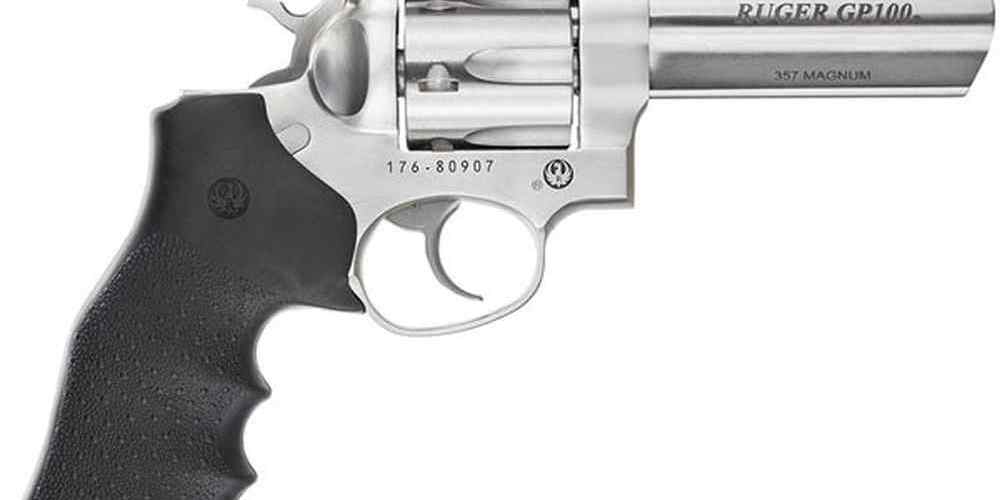“Restricting magazine capacity limits only limits your ability to defend yourself.”
Impact of Magazine Capacity Limits on Self-Defense
When it comes to self-defense, having the ability to protect oneself effectively is crucial. One of the tools that many individuals rely on for self-defense is a firearm. However, in recent years, there has been a push for magazine capacity limits on firearms, with the argument being that limiting the number of rounds a magazine can hold will help reduce the potential for mass shootings. While this may seem like a reasonable solution on the surface, there are several problems with magazine capacity limits that need to be considered.
One of the main issues with magazine capacity limits is that they can significantly impact an individual’s ability to defend themselves effectively. In a self-defense situation, every second counts, and having to stop and reload a firearm can be the difference between life and death. By limiting the number of rounds a magazine can hold, individuals are put at a disadvantage when facing an attacker who may be armed with a higher-capacity firearm.
Furthermore, magazine capacity limits can also have unintended consequences for law-abiding citizens. Criminals who are intent on committing acts of violence are unlikely to follow these limits, meaning that they will still have access to high-capacity magazines while law-abiding citizens are left with limited options for self-defense. This creates a situation where those who are most in need of protection are the ones who are most restricted in their ability to defend themselves.
Additionally, magazine capacity limits can also impact individuals who participate in shooting sports or use firearms for hunting. In these situations, having a higher-capacity magazine can be beneficial for a variety of reasons, such as reducing the need to reload frequently or improving overall performance. By imposing limits on magazine capacity, individuals who participate in these activities may find themselves at a disadvantage compared to those in states without such restrictions.
It is also important to consider the practicality of enforcing magazine capacity limits. With millions of firearms already in circulation in the United States, it would be nearly impossible to ensure that every firearm owner complies with these limits. This could lead to a situation where law-abiding citizens are inadvertently breaking the law simply by possessing a magazine that holds more rounds than the limit allows.
In conclusion, while the intention behind magazine capacity limits may be to reduce the potential for mass shootings, there are several problems with this approach that need to be considered. Limiting the number of rounds a magazine can hold can significantly impact an individual’s ability to defend themselves effectively, create unintended consequences for law-abiding citizens, and hinder those who participate in shooting sports or use firearms for hunting. Instead of focusing on magazine capacity limits, it may be more beneficial to address the root causes of violence and work towards solutions that will have a meaningful impact on reducing crime and keeping communities safe.
Effectiveness of Magazine Capacity Limits in Preventing Mass Shootings
Magazine capacity limits have been a hotly debated topic in the realm of gun control and mass shooting prevention. Proponents argue that limiting the number of rounds a magazine can hold can help reduce the number of casualties in mass shootings by forcing shooters to reload more frequently. However, opponents argue that magazine capacity limits are ineffective in preventing mass shootings and only serve to infringe on the Second Amendment rights of law-abiding citizens.
One of the main arguments in favor of magazine capacity limits is that they can potentially reduce the number of casualties in mass shootings. The idea is that if a shooter is limited to a certain number of rounds per magazine, they will have to pause to reload more frequently, giving potential victims a chance to escape or for law enforcement to intervene. In theory, this could help reduce the overall number of casualties in a mass shooting scenario.

However, opponents of magazine capacity limits argue that shooters can easily work around these restrictions by carrying multiple magazines or using high-capacity magazines that are already in circulation. In fact, many mass shooters have been known to carry multiple magazines and quickly switch them out during an attack, effectively nullifying the impact of magazine capacity limits.
Another argument against magazine capacity limits is that they unfairly target law-abiding citizens who use firearms for self-defense or recreational purposes. Limiting the number of rounds a magazine can hold does not necessarily prevent criminals from obtaining high-capacity magazines through illegal means. Instead, it only serves to restrict the rights of responsible gun owners who may need more rounds for self-defense in a high-stress situation.
Furthermore, the effectiveness of magazine capacity limits in preventing mass shootings is questionable. A study conducted by the Violence Policy Center found that only a small percentage of mass shootings involved the use of high-capacity magazines. This suggests that other factors, such as mental health issues or access to firearms, may play a larger role in determining the likelihood of a mass shooting occurring.
In addition, enforcing magazine capacity limits can be difficult and costly for law enforcement agencies. It would require additional resources to monitor and enforce compliance with these restrictions, which could be better spent on other crime prevention efforts. Furthermore, there is no guarantee that magazine capacity limits would actually prevent mass shootings from occurring, as determined shooters may find other ways to carry out their attacks.
Overall, the problem with magazine capacity limits lies in their questionable effectiveness in preventing mass shootings and their potential to infringe on the rights of law-abiding citizens. While the intention behind these restrictions may be to reduce the number of casualties in mass shootings, the reality is that they may not have the desired impact. Instead, policymakers should focus on addressing the root causes of gun violence and improving mental health services to prevent future tragedies.
Constitutional Implications of Magazine Capacity Limits
Magazine capacity limits have been a hotly debated topic in the United States for many years. Proponents argue that limiting the number of rounds a magazine can hold will help reduce the number of casualties in mass shootings, while opponents argue that such limits infringe on their Second Amendment rights. In this article, we will explore the constitutional implications of magazine capacity limits and why they may not be the most effective solution to preventing gun violence.
The Second Amendment to the United States Constitution guarantees the right of the people to keep and bear arms. This right has been the subject of much debate and interpretation over the years, with some arguing that it only applies to a well-regulated militia, while others believe it extends to individual gun ownership. Regardless of one’s interpretation of the Second Amendment, it is clear that any restrictions on gun ownership must be carefully scrutinized to ensure they do not violate this fundamental right.
One of the main arguments against magazine capacity limits is that they restrict the ability of law-abiding citizens to defend themselves effectively. In a self-defense situation, every round counts, and limiting the number of rounds a person can have in their magazine could mean the difference between life and death. Proponents of magazine capacity limits argue that most self-defense situations do not require more than a few rounds to stop an attacker, but this fails to take into account the variability of real-life scenarios.
Furthermore, magazine capacity limits may not be an effective way to prevent mass shootings. In many cases, shooters have been able to carry multiple magazines and quickly reload, negating the impact of any limits on magazine capacity. Additionally, criminals who are intent on committing acts of violence are unlikely to be deterred by such restrictions, as they are already breaking the law by planning to harm others.
From a constitutional perspective, magazine capacity limits may also raise questions about the government’s authority to regulate firearms. The Supreme Court has held that the Second Amendment protects an individual’s right to possess firearms for self-defense, and any restrictions on this right must be narrowly tailored to serve a compelling government interest. While preventing gun violence is certainly a compelling interest, it is unclear whether magazine capacity limits are the least restrictive means of achieving this goal.
In conclusion, magazine capacity limits present a complex issue with significant constitutional implications. While the goal of reducing gun violence is a noble one, it is important to consider whether such limits are the most effective way to achieve this goal. As the debate over gun control continues, it is crucial that policymakers carefully weigh the potential benefits and drawbacks of any proposed restrictions on firearms. Ultimately, the constitutionality of magazine capacity limits will likely continue to be a subject of debate for years to come.
Alternatives to Magazine Capacity Limits for Gun Control
When it comes to gun control, one of the most debated topics is magazine capacity limits. Proponents argue that limiting the number of rounds a magazine can hold will help reduce the number of casualties in mass shootings. However, opponents argue that magazine capacity limits are ineffective and infringe on the Second Amendment rights of law-abiding citizens. In this article, we will explore the problems with magazine capacity limits and discuss alternative solutions for gun control.
One of the main problems with magazine capacity limits is that they are easily circumvented. Criminals who are intent on causing harm will find ways to obtain high-capacity magazines regardless of the law. This means that law-abiding citizens are the ones who are most affected by magazine capacity limits, as they are left at a disadvantage when it comes to defending themselves against criminals who are not bound by the same restrictions.
Another issue with magazine capacity limits is that they do not address the root causes of gun violence. Mass shootings are often the result of complex social, economic, and mental health issues that cannot be solved simply by limiting the number of rounds a magazine can hold. Instead of focusing on superficial solutions like magazine capacity limits, we should be addressing the underlying issues that lead to gun violence in the first place.
Furthermore, magazine capacity limits can have unintended consequences. For example, limiting the number of rounds a magazine can hold may make it more difficult for law-abiding citizens to defend themselves in a life-threatening situation. In a high-stress situation, such as a home invasion, having a higher capacity magazine could mean the difference between life and death. By imposing arbitrary limits on magazine capacity, we are potentially putting law-abiding citizens at risk.
So what are some alternative solutions for gun control that could be more effective than magazine capacity limits? One option is to focus on improving background checks and mental health screenings for gun buyers. By ensuring that only responsible and mentally stable individuals have access to firearms, we can help prevent gun violence before it occurs. Another option is to invest in community-based violence prevention programs that address the root causes of gun violence, such as poverty, lack of access to mental health services, and social isolation.
In conclusion, magazine capacity limits are not an effective solution for gun control. They are easily circumvented, do not address the root causes of gun violence, and can have unintended consequences for law-abiding citizens. Instead of focusing on superficial measures like magazine capacity limits, we should be exploring alternative solutions that address the underlying issues that lead to gun violence. By investing in comprehensive gun control measures that focus on prevention and intervention, we can create a safer society for all.
Public Opinion on Magazine Capacity Limits
Magazine capacity limits have been a hotly debated topic in the United States for many years. Proponents argue that limiting the number of rounds a magazine can hold will help reduce the number of casualties in mass shootings. However, opponents argue that these limits infringe on their Second Amendment rights and do little to address the root causes of gun violence.
One of the main arguments against magazine capacity limits is that they do not address the underlying issues that lead to gun violence. While it is true that reducing the number of rounds a shooter can fire before reloading may slow them down, it does not address the reasons why they are committing these acts of violence in the first place. Mental health issues, poverty, and lack of access to resources are just a few of the factors that contribute to gun violence, and simply limiting magazine capacity will not solve these problems.
Another argument against magazine capacity limits is that they unfairly target law-abiding gun owners. Many gun owners use high-capacity magazines for self-defense or recreational purposes, and limiting their ability to protect themselves could put them at risk. Additionally, criminals who are intent on committing acts of violence will not be deterred by magazine capacity limits, as they can easily obtain illegal high-capacity magazines on the black market.
Public opinion on magazine capacity limits is divided. Some people believe that limiting the number of rounds a magazine can hold is a common-sense measure that will help prevent mass shootings. Others argue that these limits are ineffective and only serve to restrict the rights of law-abiding citizens. Ultimately, the debate over magazine capacity limits comes down to a question of balancing public safety with individual rights.
One of the challenges in discussing magazine capacity limits is the lack of consensus on what constitutes a “high-capacity” magazine. Some states have set limits as low as 10 rounds, while others allow magazines with up to 30 rounds. This lack of uniformity makes it difficult to enforce these limits and creates confusion for gun owners who may unknowingly violate the law by possessing a magazine that is legal in one state but not in another.
In conclusion, the problem with magazine capacity limits is that they do not address the root causes of gun violence and unfairly target law-abiding gun owners. While limiting the number of rounds a magazine can hold may slow down a shooter in a mass shooting scenario, it does little to prevent these tragedies from occurring in the first place. Public opinion on magazine capacity limits is divided, with some supporting them as a common-sense measure and others viewing them as an infringement on their Second Amendment rights. Ultimately, the debate over magazine capacity limits is a complex and contentious issue that will continue to be a topic of discussion for years to come.




